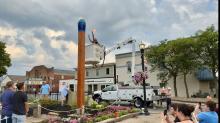Predictions for 2025: CBN Edition - Episode 632 of the Community Broadband Bits Podcast

In this episode of the podcast, Chris and the CBN team share their insights and bold predictions for the broadband landscape in 2025. Topics include the distribution of BEAD funds, the growing role of satellite providers like Starlink and Project Kuiper, state-level preemption laws, and the future of affordability programs.
The discussion tackles key challenges such as consolidation among telecom giants, the impact of tariffs on broadband affordability, and the urgent need for smarter investments in connectivity infrastructure. The team also highlights state-level progress, like in repealing state preemption laws, and anticipates the Federal Communications Commission's actions amidst a shifting political landscape.
Join us as we explore the opportunities and obstacles shaping digital opportunity and offer forward-thinking strategies for building resilient broadband ecosystems.
This show is 42 minutes long and can be played on this page or via Apple Podcasts or the tool of your choice using this feed.
Transcript below.
We want your feedback and suggestions for the show-please e-mail us or leave a comment below.
Listen to other episodes or view all episodes in our index. See other podcasts from the Institute for Local Self-Reliance.
Thanks to Arne Huseby for the music. The song is Warm Duck Shuffle and is licensed under a Creative Commons Attribution (3.0) license



